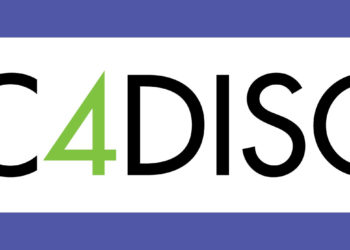Editor’s note: Today’s guest post, published in honor of International Women’s Day, is by Susan Spilka, and is based on presentations at a recent Society for Scholarly Publishing webinar, which she moderated. One of the co-founders of the Workplace Equity Project, Susan was Corporate Communications at Wiley for two decades, and was the first CHORUS Communications & Marketing Director. She now provides strategic communications, public relations, business development, and research services for scholarly publishers and technology services.
A year ago, with the #MeToo movement in full steam, it seemed like the world might be at a tipping point with regard to gender bias issues. Yet McKinsey & Company’s Women in the Workplace 2018 report, the latest in their longitudinal study of the state of women in US workplaces, confirms that this optimism was premature. Sadly, their data not only shows a lack of progress, it demonstrates some backsliding. Last year, 56% of the respondents said their employers prioritized diversity. This year, this number had dropped to 45%. It’s hard not to pick up on the backlash these days.
The situation is not all grim, however. In our industry there are some signs of progress. Five women were named as CEOs of major publishing businesses over the past couple of years (Annie Callanan at Taylor & Francis, Vicky Williams at Emerald Publishing, Alison Mudditt at PLOS, Kumsal Bayazit at Elsevier, and Annette Thomas at Clarivate Analytics). It’s also encouraging to see good progress on diversifying the conference speaker roster, a metric that reflects the industry’s leadership pipeline. Each step forward confirms that our efforts are not in vain, but success will take time and perseverance.

Having spent the last 25 years in senior marketing and communications roles in scholarly publishing, I’ve had an insider’s view of how commercial and non-profit workplaces and boardrooms operate. Like many around me, I became sensitized to the lack of equity that people of color, women, LGBT individuals, and others experience daily, even in our supposedly enlightened industry. On a personal level, it was frequently exasperating that the constraints of implicit bias seemed to get worse the older, wiser, and more capable I became.
To try and validate this anecdotal experience – my own and others — and establish a baseline to measure progress toward increased diversity and inclusion, in 2017, together with Simone Taylor and Jeri Wachter, I launched the Workplace Equity Project*. With the help of 17 industry organizations and companies, and a bunch of amazing volunteers, we launched a survey on workplace experiences, practices, and opportunities in the global scholarly publishing community. Nearly 1,200 people responded, adding over 1,500 comments.
I was delighted to be able to highlight some of our findings from the survey when I moderated the Society for Scholarly Publishing’s first 2019 webinar, From Diversity to Inclusion and Equity, looking at how to move publishing organizations from talk to action to realize inclusive and equitable workplaces. Our panelists — researcher Dr Amy Diehl, Associate Vice President & Chief Information Technology Officer at Shippensburg University of Pennsylvania, and Jessica Gedamu, Springer Nature’s Global Director of Diversity and Inclusion – also shared practical ideas and experiences that participants could bring back to their companies.
This post briefly summarizes our presentations, and I strongly encourage you to listen to the webinar recording as soon as it’s available here after April 27
Susan Spilka: Workplace Equity Survey
The findings reflect our many differing realities, including confirming that our industry is overwhelmingly (81%) white. One eye-opener for me was that that nearly all groups are largely blind to the challenges that other groups face, except people of color, who are more likely to perceive biases against other groups (e.g. gender, age, sexuality) in addition to their own. I’ve noticed that many people give themselves a pass on self-scrutiny if they have good relationships with individuals from a particular demographic group (“but my best friend is…”). The fact is that we all have ingrained biases that merit careful examination.
The Workplace Equity (WE) Survey also highlighted some of the practical opportunities we have to improve diversity and inclusion in scholarly communications. For example, we found that in-line managers have a tremendous impact – positive and negative – on workplace experience. Individual and collective awareness goes a long way to curbing bias, but a bad manager can amplify it. Other WE Survey data demonstrated the relative lack of training on how to improve social and cultural affinity with groups and individuals who don’t fit the norms.
Amy Diehl: Subtle bias, what it is, and how it can be eliminated
Although organizations have adopted policies prohibiting overt forms of sex discrimination, impediments to women’s advancement can be more subtle and elusive than deliberate discrimination. In fact, because they are built into ordinary institutional functioning, they are often invisible and arise from gender stereotypes and workplace norms that tend to favor men.
Amy’s work on gender barriers in a variety of industries has been published in peer-reviewed journals and edited volumes. She became interested in subtle (also called implicit or unconscious) bias as she experienced it firsthand, when moving up the ranks from an entry-level university IT job. She noted, for example, that whereas “my boss enhanced his respect with his decisiveness, I lost points with my team by exerting my authority. No one told me I would be perceived differently because I was a woman. I thought that if I worked hard, I would earn the respect of those around me.”
After initially conducting interviews with women executives in higher education and in faith-based non-profit mission organizations about gender barriers, Amy and her collaborator, Dr Leanne Dzubinski, then partnered with researchers Drs Amber Stephenson and David Wang to develop the Subtle Bias Towards Women Leaders (SuBTLe) scale, which poses multiple-choice questions corresponding to the 27 gender-based leadership barriers that were identified in their qualitative research. They tested the scale with women from four sectors (higher education, faith-based non-profits, healthcare and law) and their findings, and the scale itself, will be publicly available soon.
Amy and her colleagues’ research frames the problem of subtle bias in a stark light and raises our awareness. But what can we do to actually prevent bias and work towards gender equity? The Gender Equity Framework below, developed by D.M. Kolb et al in 2003, and fully discussed and referenced in Amy and Leanne’s 2016 paper, contains four distinct approaches that organizational leaders can use. Each addresses some part of the problem, and can lead to improvement – although the first three are not complete solutions and, as Amy noted, may even lead to other issues. And of course, the process of revising work culture is not a one-time fix – it is an iterative process much like peeling an onion where each layer reveals yet another to be explored and examined, so that ultimately we can create work environments where everyone, regardless of gender, ethnicity, age, sexual orientation, and other differentiators, can thrive.

While not everyone has the power to directly make organizational change, Amy encouraged us all to speak up, “Don’t assume that change isn’t possible. Do what you can in your own role. And ask your bosses and organizational leaders for what you and others need to establish an equitable workplace.” One practical example she gave is to establish a norm to ensure that individuals are not interrupted in meetings and to call out demeaning treatment when it occurs. Another is to remove the pressure to check emails outside of work hours, providing an equal playing field for those who are juggling caretaking responsibilities.
Jessica Gedamu: Springer Nature’s D&I Journey
For the past year, our second panelist, Jessica Gedamu, has been working to drive diversity and inclusion (D&I) at Springer Nature. She shared details of their D&I governance infrastructure, and how she’s setting their D&I roadmap in motion together with the company’s leadership.
Springer Nature started its D&I journey in 2016, when a taskforce was established, formed of leaders in different locations and business areas. They identified initial focus areas, developed ideas for initiatives to drive change in these areas, and decided to bring in someone to drive the program full time, “that is where I came in,” explained Jessica. Today, she works with two main D&I governance bodies. Springer Nature’s Group General Counsel and Management Board member Rachel Jacobs is the company’s D&I Champion, leading the D&I Council, which consists of six executive leaders from HR, Communications, and the business. They meet regularly to actively shape D&I strategy, allocate resources, and provide guidance, and they are very visible as D&I leaders. This is the governance body Jessica works with most closely.
The second governance body is the D&I Advisory Group, which consists of colleagues from across the business units and locations. Their role is to provide input and support with D&I projects, and be multipliers for the topic with their internal constituencies.
Having two such senior governance bodies dedicated to D&I crucially helps with buy-in from the top as they build out the D&I program. Recognizing that success requires engagement at all organizational levels, Springer Nature supports employees in setting up networks they feel are important. SN Pride, a network for the LGBTQ+ community and allies, kicked off last year in June, and more networks will launch in the coming months (for Disabled Employees, Parents, Women, Inclusion Advocates). They are employee driven, but they work closely with Jessica and their executive sponsors, to drive change in specific topics.
Before Jessica joined Springer Nature, the D&I Task Force had determined two initial focus areas based on available data: gender balance and international representation in global leadership positions. Currently women make up 57% of Springer Nature’s workforce, but only 39% of its global leadership positions. Similarly, about 38% of staff are based in Europe, but 65% of global leadership are European. Over the past year, the company has developed several initiatives that drive change in these areas, grouped into five fields of action — Inclusive Leadership, Recruiting, Talent Development, Metrics, and Community Building — and started the conversation around diversity and inclusion online and offline. The company’s D&I roadmap has included online training on Addressing Unconscious Bias, which was developed in-house and rolled out to all colleagues, and which will be followed by on-site workshops on Inclusive Leadership.
Recognizing that diversity doesn’t just happen on its own – employers have to actively seek and recruit candidates from a variety of backgrounds and find ways to access diverse talent pools — Springer Nature created a D&I Recruiting Checklist, a guide for inclusive hiring. It looks at ways to diversify the candidate pool, provides suggestions for the selection process of the shortlist, interviewing, evaluating candidates, and includes helpful resources.
Another key component of Springer Nature’s D&I roadmap is the launch of two mentoring pilots that launched last year. The first focuses on mid-level managers with care responsibilities for children or elders, which can negatively affect career development. It aims to support colleagues who are actively involved in care work during the “rush hour of life” – the time when family responsibilities and career development collide. Mentors provide guidance and support mentees in continuing to actively pursue their career development. The second program focuses on international talents, bringing together a mentor and mentee from different regions to increase international visibility, international exchange, career guidance and intercultural learning.
In 2019, Springer Nature will build on their existing programs and develop a five-year D&I strategy. It will build on the lessons they learned in 2018:
- Senior leadership buy-in is key
- Doing it well takes time and resources
- Think global, act local
- People are passionate about D&I – invite them to get involved
Summary
Amy and Jessica offered many insights and recommendations on how we can take the fight for equity and against bias to the next level. Much can be learned from sharing best practices to raise awareness and spark engagement at all organizational levels and hold employers accountable for realizing change. If your organization is making strides, please share some details with me here or at <sbspilka@gmail.com>.
Discussion
2 Thoughts on "Guest Post — From Diversity to Inclusion and Equity: Moving Beyond Good Intentions"
Thanks for providing this overview for those of us who couldn’t make the webinar, Susan – there’s some great advice in here. I particularly like some of the initiatives Jessica described and will definitely want to borrow from those. But I’d also encourage smaller organizations to think about how to adapt these – small-scale action is still meaningful, and you don’t have to be the size of Springer Nature to have an impact.
That’s a great point, Alison – and I think that smaller organizations might have even a better shot at making progress through increased engagement and awareness on the issues. There are tons of resources available (two that come to mind immediately: https://www.publishers.org.uk/activities/inclusivity/ and catalyst.org).
In the last paragraph of my post, I’ve put in a call for info on best practices from other organizations in our industry . I’d like to continue documenting successful programs at organizations that are making strides.



